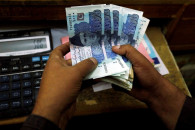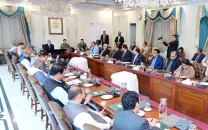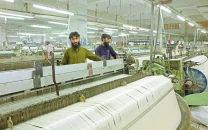Tourism can be a multi-billion industry, but it isn’t
First preference for domestic tourists should be local spots, however, that is not the case at the moment

Winter is here and most people across the world are busy planning their annual holidays. Those who aren’t are already planning to do “something” next year.
In Pakistan, the affluent classes fly to Dubai, Europe, Turkey, Azerbaijan and/or Malaysia. The rest, however, find refuge in the northern areas of Pakistan.
Whether you are a part of the lower, middle or upper class – vacations are a necessary part of life that help citizens spend quality time with their loved ones and take care of their own mental/ physical wellbeing. Unfortunately, this is just one more area that policymakers conveniently ignore.
Thankfully, due to better motorway connectivity, a plethora of people are able to move about domestically. Karachiites, however, are not as blessed and still have to navigate through a rough 300km patch from Hyderabad to Sukkur – for which the laying of foundation has just begun. Hence, seeking a cheap flight out of the country becomes a preference for many.
For tourism to flourish, infrastructure connectivity is imperative. Naturally, a first preference for domestic tourists should be local tourist spots. That is not the case at the moment. The private sector, however – if supported with adequate policy measures – can revamp this dreary outlook.
To earn $1 billion per annum, Pakistan would need to attract 200,000 people every year with each person spending about $5,000. While that amount may seem reasonable for some classes, it may not be affordable for a large majority of domestic tourists.
The question that arises here is, are we trying to attract overseas Pakistanis and foreigners to visit Pakistan (bring inflows)? Or are we building solid infrastructure to divert the attention of Pakistanis spending that money abroad (stop outflows) to consider local spots instead.
Either way, for anyone to consider investing their money, incentives and necessary amenities are vital.
The first necessary action that will need to be taken is to control the law-and-order situation in the country. Incidents of ‘terrorism’ in the northern areas will only dampen investor sentiments. To align the interests of the law enforcement agencies, monetary rewards should be attached to the number of tourists visiting the area.
Secondly, airport connectivity to far flung areas – in winters or otherwise – needs to be improved. If snow-capped peaks in other global destinations can be accessed during the peak winter season, why are flights to Pakistan’s northern areas disrupted with every weather forecast?
Thirdly, as an incentive to investors eyeing the tourism sector, tax holidays, cheaper loans and rebates should be offered – especially to global resorts, restaurants and brands.
As a fourth option that could help tourism blossom in the country, frequent travellers, nomads and remote workers should be able to buy studios or hotel rooms with real-estate protection as long as a pollution-free, safe-for-women and terrorism-free environment is maintained.
A fifth, important consideration, is to make religious sites such as the Kartarpur Corridor easily accessible via express visas, but strictly monitored through tourist-only areas, extreme security and direct international flights to make it a world-class tourist destination for our Sikh friends across the globe.
Lastly, incentives such as zero tax during tourist season on air tickets, restaurants, hotel stays, no personal income tax, shopping, taxi services, day care centres, entertainment areas such as skiing, theme parks and water sports can provide a comforting, affordable and peaceful escape from the normally fast-paced, monotonous 21st century lifestyle.
The K-P government has, admittedly, undertaken several initiatives to promote tourism and can be a complete game changer if the same incentives are shared with other provinces, cities and local areas.
Swat, Hunza, Galiat, Chitral, Malam Jabba, Naran, Skardu, etc should have circular economies that allow them to reinvest in tourism related revenues and must be fully capitalised and promoted. With additional investments, competition will also drive prices to a competitive level.
Pakistan is on the brink of an economic crisis and every dollar counts. Tourism-boosting avenues can flip the equation very quickly if certain long-term facilitation centres are created for investors and tourists.
Investing in tourism could give us a better chance at economic growth than exports give – with little additional burden on the national exchequer.
Instead of placing ads on TV about apartments and villas, the government should concentrate on showcasing its vastly beautiful tourist destinations.
The writer is an independent economic analyst
Published in The Express Tribune, December 19th, 2022.
Like Business on Facebook, follow @TribuneBiz on Twitter to stay informed and join in the conversation.



















COMMENTS
Comments are moderated and generally will be posted if they are on-topic and not abusive.
For more information, please see our Comments FAQ